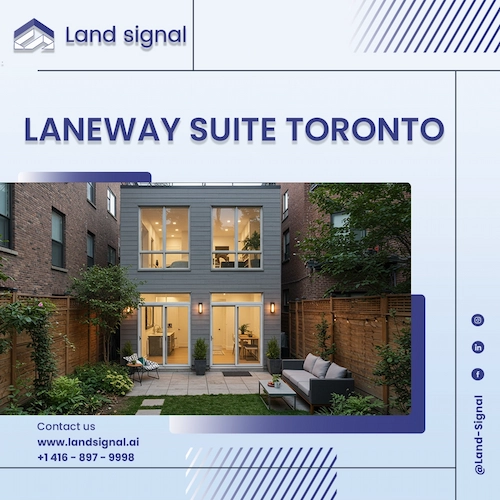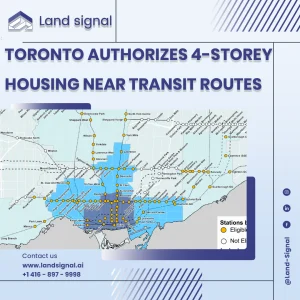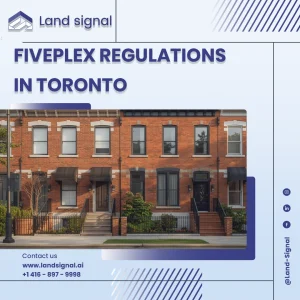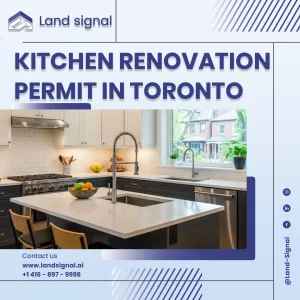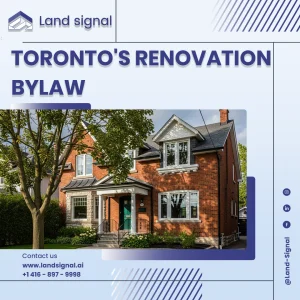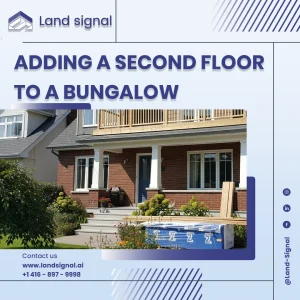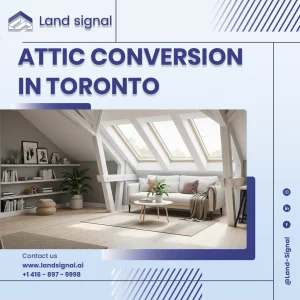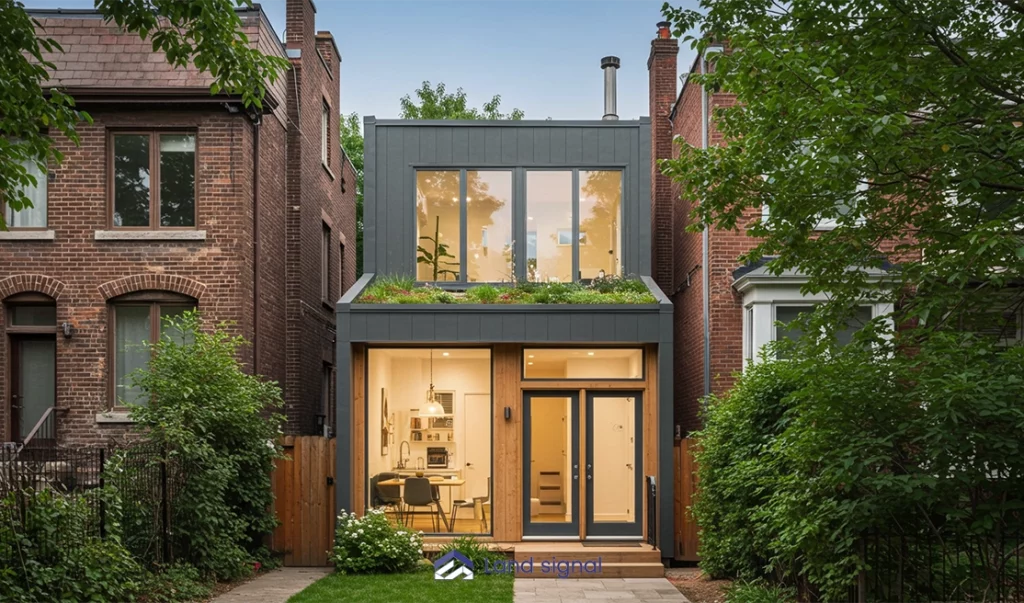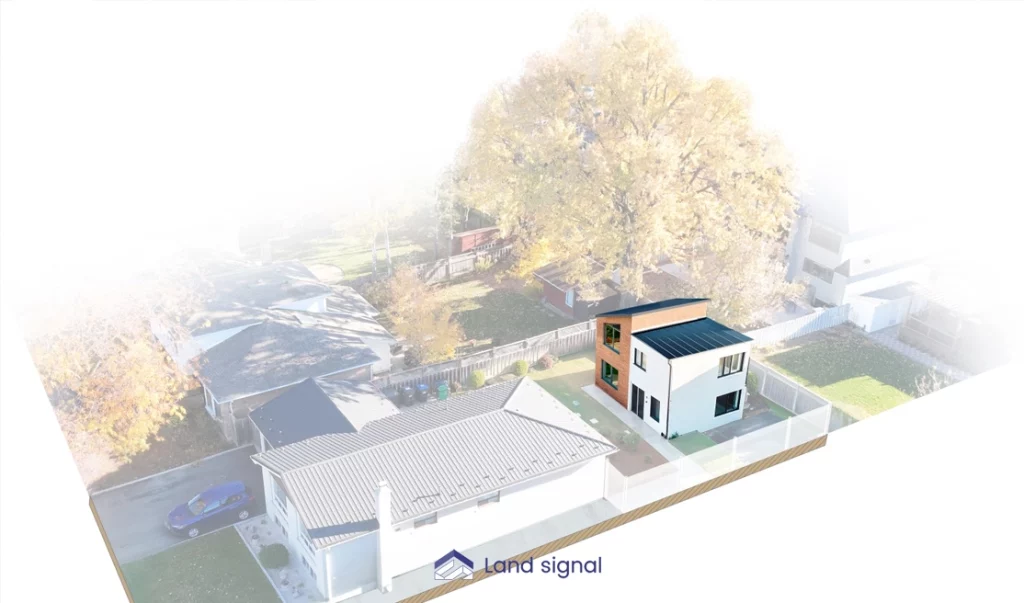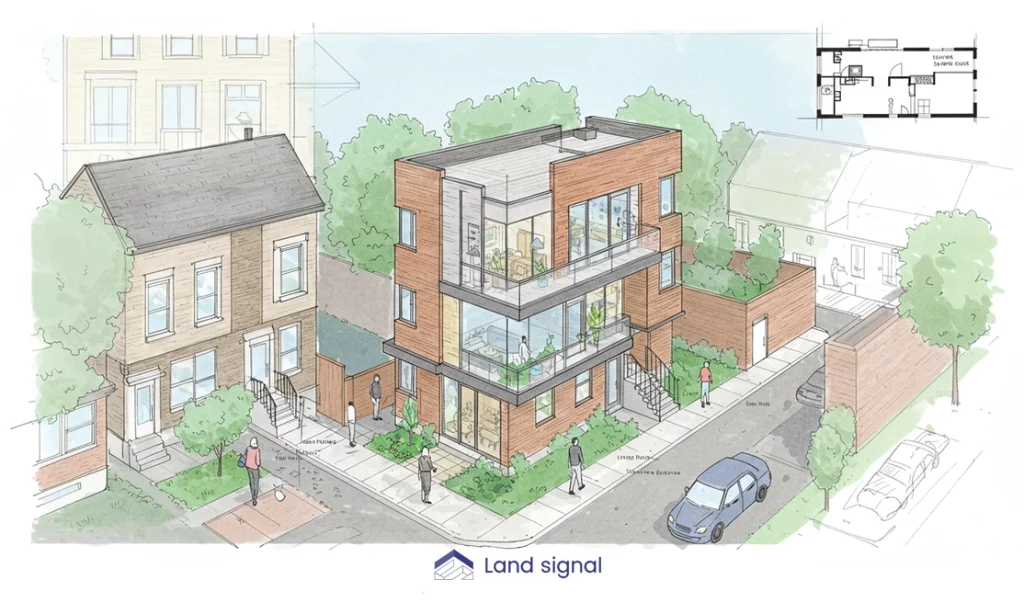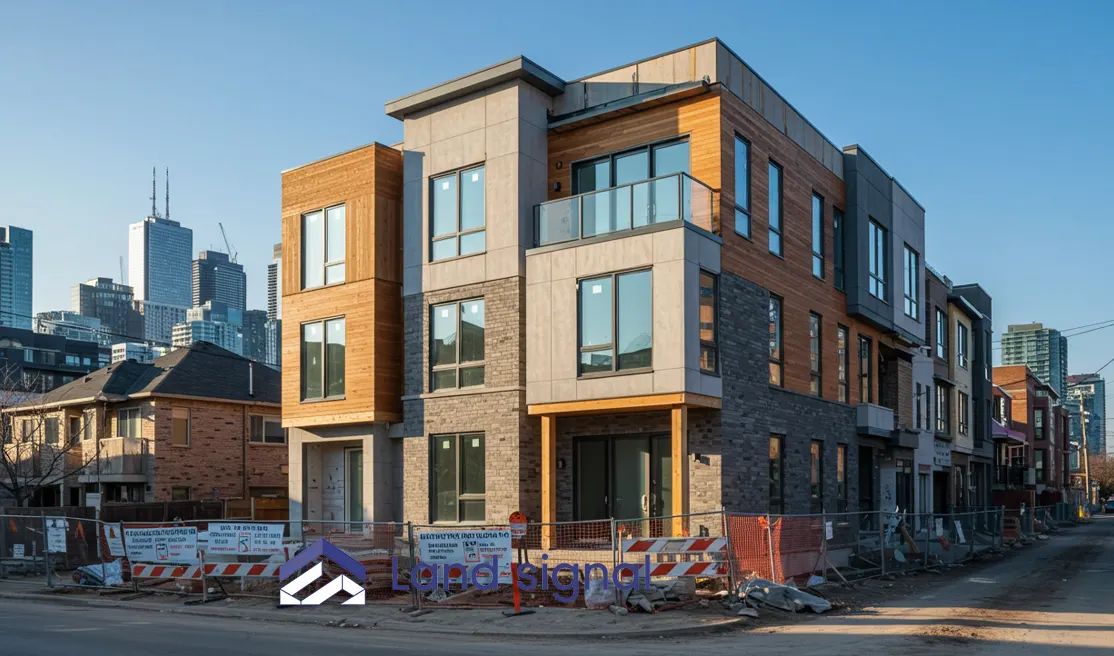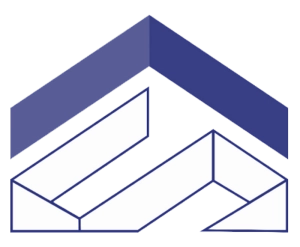Toronto’s housing landscape is constantly evolving, and laneway suites have emerged as a popular and innovative solution to address the city’s growing housing needs. These self-contained dwelling units, tucked away in the rear of existing properties, offer a unique blend of urban living and neighborhood charm.
Laneway suites provide a multitude of benefits for homeowners, including potential rental income, increased property value, and flexible living arrangements. They also contribute to the city’s density and offer a more sustainable and affordable housing option.
This guide will explain everything about Laneway Suite Toronto. It will cover the basics, the regulations, design considerations, and construction. If you want to add a laneway suite to your property or are just curious about this growing trend, this guide will give you the essential information.
What Is a Laneway Suite Toronto?
A laneway suite Toronto is a self-contained dwelling unit located on a residential property, specifically situated at the rear and accessed from a laneway. It’s essentially a separate house, smaller than the main dwelling, complete with its own kitchen, bathroom, living area, and sleeping quarters. This allows for independent living, making it ideal for rental income, extended family, or even as a home office or studio space.
It’s important to distinguish a laneway suite from a garden suite. While both are considered ancillary dwelling units, a garden suite is located within the main house or attached to it, whereas a laneway suite is a completely detached structure. This distinction is crucial because it affects regulations, access requirements, and overall design considerations. The laneway access not only provides privacy but also contributes to the unique character of these dwellings, fostering a sense of community within the laneway network.
The ability to use a laneway suite for home occupations or short-term rentals, provided it’s the principal residence, adds to its versatility and appeal for homeowners and investors alike. Laneway suites offer a unique opportunity to create new rental housing options within established neighbourhoods, increasing density and providing more diverse housing choices for residents.
Difference Between Laneway Suite and Garden Suite
The key difference Between Laneway Suite and Garden Suite lies in their location and access. A laneway suite, as the name suggests, is accessed directly from the laneway at the back of the property. This provides a distinct separation from the main house, offering greater privacy for both the occupants of the laneway suite and the residents of the main dwelling.
A garden suite or garden house toronto, on the other hand, is either within the main house, like a basement apartment, or attached to the main house, potentially as an addition. This means access is typically through the main property or a shared yard. This difference in access significantly impacts the design, construction, and regulations governing each type of dwelling.
For example, laneway suite design Toronto often have stricter requirements for fire safety and emergency access due to their detached nature. Understanding these distinctions is crucial for homeowners considering adding a secondary dwelling unit to their property.
Read Also: Comprehensive Guide to Second Floor Addition Toronto
Regulations and Development of Laneway Suites in Toronto
Building a laneway suite in Toronto requires strict adherence to specific regulations and guidelines set by the City of Toronto. These regulations are in place to ensure safety, maintain neighborhood character, and manage the impact on existing infrastructure. Understanding these regulations is crucial before embarking on a laneway suite project.
Firefighting Access
Fire safety is paramount in any building project, and laneway suites are no exception. The City of Toronto has specific regulations regarding firefighting access to ensure the safety of occupants and the surrounding properties.
Access from Municipal Street
A clear and unobstructed access path from the municipal street to the laneway suite is mandatory. This path must be wide enough (min 90 cm /3 feet) and high enough to allow the fire department and emergency personnel to reach the suite quickly and efficiently.
- Main Entrance Distance: The main entrance of the laneway suite must be within a maximum distance of 45 meters from the municipal street. This ensures that firefighters can reach the entrance quickly in case of an emergency.
- Hydrant Proximity: A fire hydrant must be located within 90 meters of the main entrance of the laneway suite, and there must be an unobstructed path to the hydrant. This provides a readily available water source for firefighting operations.
Access Path Specifications
The access path must meet specific dimensions and surface requirements. It must be at least 0.9 meters wide and 2.1 meters high within the property. The surface must be suitable for all weather conditions, ensuring accessibility year-round.
Access Requirements for Laneway Suites with Laneway-Only Access
Laneway suites with access solely from the laneway have additional considerations regarding firefighting access.
- Main Entrance Distance: The main entrance of the laneway suite must still be within a maximum of 45 meters from the municipal street, even if the access is only from the laneway. This ensures that emergency personnel can access the suite from the street if necessary.
- Hydrant Proximity: Similar to laneway suites with street access, a fire hydrant must be within 90 meters of the main entrance, with an unobstructed path.
- Fire Department Access: It’s crucial to note that Toronto Fire Service apparatus cannot use the laneway itself as a fire department access route. This means the laneway must be accessible from the street for emergencies.
- Main Entrance Location: The main entrance of the laneway suite must be located on the laneway side, facilitating direct access from the laneway.
Laneway Suite Toronto Footprint and Height Requirements
The size and height of a laneway suite are subject to specific restrictions.
Maximum Footprint
The footprint of a laneway suite Toronto is subject to strict limitations based on the lot area and the presence of other ancillary structures. The total area covered by all ancillary buildings, including any existing garden suites or other accessory structures, cannot exceed 20% of the total lot area and total FSI ( Habitable area/Property total area) of both Laneway unit and main unit should not exceed zoning FSI of neighbourhood.
This ensures that the laneway suite doesn’t overwhelm the property or create an overly dense footprint. Additionally, the area covered by an ancillary garden suite builder Toronto may not exceed the lesser of 40% of the area between the rear wall(s) of the main residential building and the rear lot line, and a total lot coverage of 80 square meters and 1600 sqm in total.
This specific regulation addresses the combined footprint of a laneway suite and a garden suite, if both are present on the property. It’s crucial to accurately calculate these areas to ensure compliance.
Maximum Height
Maximum height of laneway suites are determined by the distance between the suite and the main residential building. This tiered approach aims to balance the desire for maximizing living space with the need to minimize overshadowing and maintain neighborhood aesthetics. If the laneway suite Toronto is located between 5.0 meters and less than 7.5 meters from the main residential building, the maximum permitted height is 4.0 meters. This lower height limit helps prevent the laneway suite from dominating the main house or casting excessive shadows.
If the laneway suite is located 7.5 meters or more from the main residential building, the maximum permitted height increases to 6.3 meters. This greater distance allows for a taller structure while still maintaining appropriate separation and minimizing overshadowing. These specific height limits supersede the general regulations outlined in the City’s bylaws, as specified in By-law 1107-2021. It’s essential to consult the latest bylaw information to ensure compliance.
Maximum Storeys
Laneway suite Toronto are generally limited to a maximum of two storeys. This restriction helps maintain the residential scale and character of the neighborhood. While two storeys are permitted, the overall height of the structure must still comply with the aforementioned height restrictions based on the distance from the main house. This provision overrides the general regulations, as stipulated in By-law 810-2018. It’s important to note that basements are typically considered a storey for the purposes of this regulation.
Setback Requirements for Laneway Suite Toronto
Setbacks are critical aspects of laneway suite Toronto construction, dictating the minimum distances the structure must be placed from property lines. These regulations ensure adequate space, light, and privacy for both the laneway suite occupants and neighboring properties. Understanding these rules is crucial for successful project planning and compliance.
Minimum Rear Setback: The required rear yard setback for a laneway suite depends primarily on whether the lot backs onto a street or lane and whether the rear wall of the suite has any openings.
If your lot doesn’t back onto a street or lane, and the back wall of the laneway suite has no openings (doors, windows, etc.): In this specific scenario, no rear setback is required (0 meters). The absence of openings on the rear wall mitigates privacy concerns for both the laneway suite and the adjacent property.
In all other cases: A minimum 1-meter rear setback from the rear property line is required. This standard setback ensures adequate space for maintenance, utilities, and emergency access, while also providing a buffer between properties.
Side Yard Setback
Side yard setbacks are similarly crucial for maintaining privacy and ensuring adequate space between properties. The specific requirements depend on several factors, including the lot’s configuration, the presence of adjacent streets or lanes, the height of the laneway suite, and the zoning of neighboring properties.
- If your lot doesn’t border a street or lane, and the side wall of the laneway suite has no openings: In this case, no side yard setback is required (0 meters). The absence of windows or doors on the side wall eliminates privacy concerns and allows for greater flexibility in positioning the laneway suite Toronto.
- If your lot borders a street: The required side yard setback for the laneway suite must match the minimum side yard setback required for the main house on the lot. This maintains consistency in the building line along the street and preserves the established streetscape.
- If your lot borders a Residential zone (R, RD, RS, RT, or RM) AND backs onto a lane, and the laneway suite Toronto is taller than 4 meters: In this situation, a 1.5-meter setback is required from the side property line that is adjacent to the rear of the neighboring lot. This increased setback for taller laneway suites in lane-backed lots helps mitigate overshadowing and privacy concerns for the adjacent property.
- In all other cases: A minimum 1-meter side yard setback is required from the side property line. This standard setback provides a reasonable buffer between properties and ensures adequate light and ventilation.
Key Points:
- Setbacks are the minimum distances a building must be from property lines. These regulations are fundamental to urban planning and are crucial for managing various considerations, including privacy, fire safety, access, and light penetration. Adhering to these setbacks is essential for compliance with City bylaws.
- These rules are meant to ensure adequate space, light, and privacy for both the laneway suite and neighboring properties. Setback requirements are designed to balance the needs of laneway suite occupants with the rights of neighboring property owners. They help prevent overshadowing, maintain privacy, and ensure adequate access for emergency services.
- Specific situations may require different setbacks, so it’s important to consult the full bylaw and/or a professional if you’re planning a laneway suite. The complexity of setback regulations necessitates careful review of the applicable bylaws. Consulting with a qualified architect, planner, or other building professional is highly recommended to ensure accurate interpretation and application of these rules to your specific property. They can help navigate the complexities of the bylaw and ensure your laneway suite project meets all requirements.
Distance from Laneway Suite to Main House
This regulation, which supersedes the general requirements found in regulation 10.5.60.30(1), specifically addresses the minimum horizontal distance required between a laneway suite (located within an ancillary building) and the main house on the same property. This separation is determined by the height of the laneway suite and forms part of the broader Toronto laneway house requirements.
Read Also : Minimum Separation Between a Main House and Laneway Suite in Toronto
If the laneway suite is 4 meters tall or shorter: A minimum horizontal distance of 5 meters is required between the laneway suite and the main house. This distance provides a reasonable buffer zone, allowing for adequate light penetration and minimizing overshadowing of either structure.
If the laneway suite is taller than 4 meters: An increased minimum horizontal distance of 7.5 meters is required. This greater separation is necessary to mitigate the impact of a taller structure, ensuring sufficient light access for both dwellings and minimizing the sense of enclosure.
Key Points:
- This separation is measured horizontally from the closest points of the two buildings. This measurement is taken horizontally, irrespective of any height differences between the structures. It’s important to accurately determine the closest points on each building to ensure compliance.
- The goal is to ensure adequate space, light, and privacy for both the main house and the laneway suite. The separation requirements are designed to balance the needs of both dwellings. Sufficient distance minimizes overshadowing, promotes natural light penetration, and preserves a sense of privacy for the occupants of both the main house and the laneway suite.
- Taller laneway suites need more distance to minimize shadows and maintain a sense of openness. The increased separation requirement for taller laneway suites recognizes their greater potential impact on light access and the overall sense of space. This tiered approach ensures that taller structures do not unduly overshadow the main house or create an oppressive environment.
The Benefits of Laneway Suites in Toronto
Laneway suites offer a range of benefits for homeowners and the city and are an important part of Toronto laneway house requirements.
Providing Additional Income
Renting out a laneway suite can create a substantial and consistent stream of passive income. This additional revenue can significantly offset mortgage payments, property taxes, and other expenses, enhancing the overall return on investment. This income potential is a major driver of laneway suite development under current Toronto laneway house requirements.
Increasing Property Value
Constructing a legal and well-designed laneway suite can substantially boost a property’s market value. This added value represents a significant return on investment and can be leveraged for future financing or sale. The increased density and rental potential are attractive features for prospective buyers.
Offering More Privacy
Laneway suites provide a distinct and separate living space, affording privacy for both the suite’s occupants and the residents of the main house. This separation of living quarters enhances comfort and independence for all parties. This privacy feature is highly desirable for both homeowners and tenants.
Improved Family Living
Laneway suites offer flexible housing solutions for extended family members, such as aging parents or adult children. They allow family members to maintain their independence while remaining in proximity. This can be a valuable alternative to assisted living facilities or separate housing arrangements.
Encouraging Slower Development
Laneway suites contribute to a more gradual and organic form of urban densification, known as “gentle density.” They provide much-needed housing within existing neighborhoods without requiring large-scale developments or significant alterations to the existing urban fabric. This approach helps preserve neighborhood character while addressing housing needs.
Final Takeaway | The Future of Laneway Suite Toronto
Laneway suites in Toronto are an innovative and practical solution to the city’s growing housing needs, offering homeowners the opportunity to add functional, flexible living space while increasing property value. Whether you’re considering using the space for rental income, accommodating extended family, or creating a home office, a laneway suite can be a highly beneficial investment. However, it’s important to navigate the requirements and regulations set forth by the City of Toronto to ensure a smooth and successful project.
From ensuring your property meets the minimum lot size and laneway width to complying with setback, height, and design standards, there are several key factors to consider before embarking on a laneway suite development. Understanding these regulations is critical to avoiding potential delays or complications during the application and construction process.
Ultimately, if your property qualifies and you meet the necessary criteria, a laneway suite can provide a sustainable, affordable, and effective way to contribute to the city’s housing landscape while enhancing the functionality and value of your property. With the right planning and professional guidance, you can make your vision a reality.
At Land Signal, we are here to help you navigate the process and ensure that your Laneway Suite project is both compliant and successful. Contact us today to get started!
Frequently Asked Questions
Yes, you can build a laneway suite if your property meets the requirements established in the City of Toronto’s bylaws. These requirements include factors such as minimum lot size, laneway width, setbacks, and proximity to utilities. It’s crucial to confirm that your lot is eligible based on these criteria before moving forward with the design and construction process.
Eligibility for a laneway suite in Toronto depends on factors such as access to the laneway, lot size, and compliance with city regulations. While a quick assessment can provide an initial indication of feasibility, a professional evaluation is recommended to confirm that your property meets all requirements.
To build a laneway suite Toronto, you’ll typically need several professionals. An OAA licensed architect or Professional engineer will help design the suite and ensure it adheres to local building codes and safety regulations. An Ontario Land Surveyor will provide necessary property surveys to confirm boundaries and zoning compliance. Additionally, a general contractor is required to manage the construction process, ensuring the project stays on schedule and within budget.
Using your laneway suite as a rental property can be a great way to generate passive income. Rental income can help offset your mortgage payments, provide extra cash flow, and increase your financial flexibility. Over time, having a rentable space on your property can also boost the overall value of your home, making it a solid long-term investment.
Yes, laneway suites are legal in Toronto, provided they comply with the city’s regulations and zoning laws. Since the City of Toronto introduced laneway suite development in 2018, they have been an authorized form of residential construction as long as they meet safety, access, and design standards. You’ll need to apply for permits and ensure your design is approved by the city.
Laneway suite Toronto are subject to specific size regulations. Generally, a laneway suite can be up to two stories tall and can have a footprint of up to 1,600 square (feet + Basment), not including the basement. The size of the suite is also regulated by the total lot coverage, meaning it can occupy no more than 20% of the lot’s area. These rules are in place to ensure that the new structures align with the neighborhood’s character and urban planning goals. if you need a bigger one you need to apply minor variance trough Committee of adjustment.
In order to obtain a laneway suite permit in Toronto, you must submit a completed application form along with detailed architectural drawings, including floor plans, elevations, and site plans. The blueprints must comply with all relevant building codes and city regulations.
